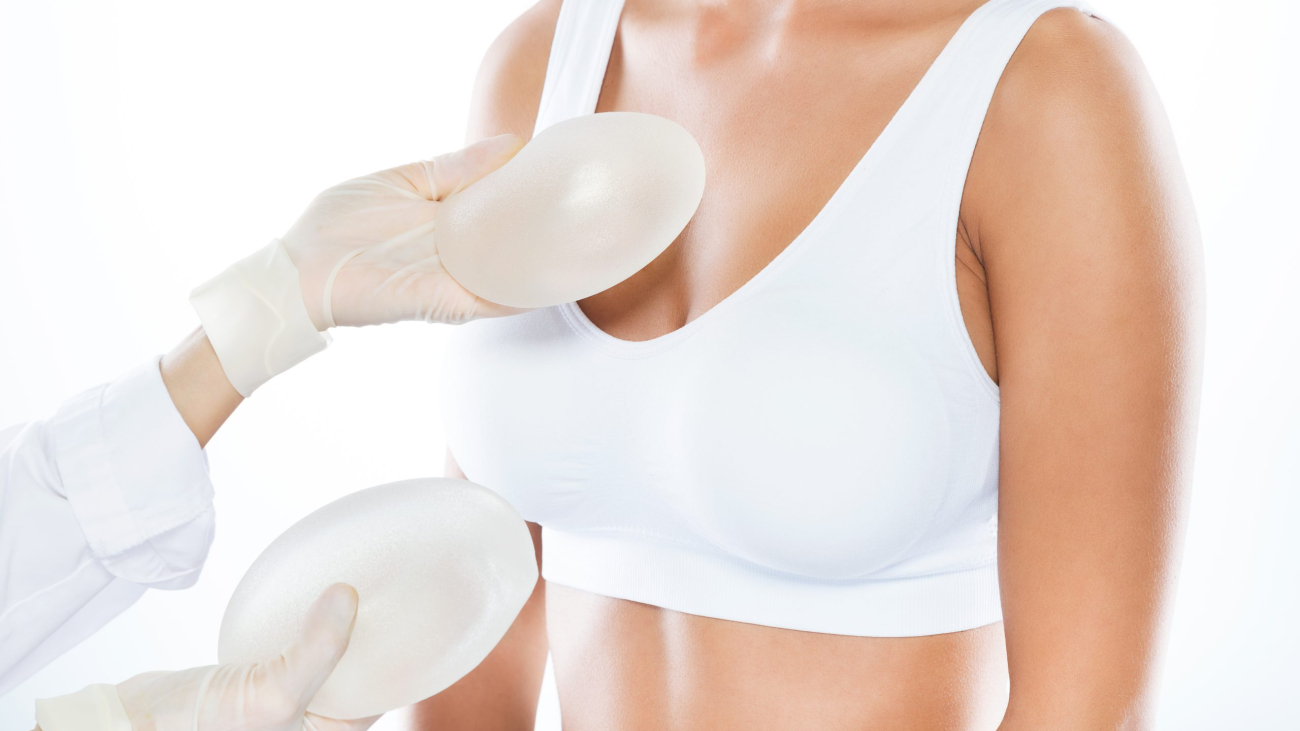Breast aesthetic surgeries have evolved significantly, offering diverse solutions for patients seeking to enhance their body image and quality of life. These procedures, encompassing breast lift (mastopexy), breast reduction (reduction mammoplasty), and breast augmentation with implants, address distinct patient concerns. Each technique is meticulously chosen based on anatomical considerations, patient expectations, and desired outcomes. For instance, mastopexy repositions and reshapes the breast, correcting ptosis, while reduction mammoplasty alleviates physical symptoms associated with macromastia. Implant surgery, conversely, increases breast volume and improves contour. The strategic application of these techniques reflects a deep understanding of reconstructive and aesthetic principles. This comprehensive approach ensures optimal results, aligning with established surgical standards and patient safety protocols.
Table of Contents
How Do Breast Lift, Reduction and Implant Techniques Differ?
The fundamental differences between mastopexy, reduction mammoplasty, and breast augmentation lie in their surgical approaches, tissue manipulation methods, and structural modifications. Each procedure employs distinct techniques tailored to achieve specific aesthetic and functional outcomes.
| Procedure | Incision Pattern | Tissue Manipulation | Primary Structural Change |
|---|---|---|---|
| Breast Lift (Mastopexy) | Anchor, lollipop, or crescent | Repositioning existing tissue | Elevation of nipple-areolar complex |
| Breast Reduction | Anchor or vertical | Removal of excess tissue | Volume reduction and reshaping |
| Breast Implants | Inframammary, periareolar, or transaxillary | Minimal tissue disruption | Volume enhancement via implant placement |
Mastopexy techniques focus on repositioning ptotic breast tissue without significant volume alteration. The anchor incision remains the most versatile approach, extending around the areola, vertically down to the inframammary fold, and horizontally along the fold. Surgeons redistribute existing parenchyma whilst creating internal support structures through tissue repositioning and dermal suspension techniques.
Reduction mammoplasty employs similar incision patterns but involves substantial tissue excision. The procedure combines volume reduction with lifting, requiring careful preservation of nipple-areolar blood supply through pedicle techniques. Superior, inferior, or medial pedicles maintain vascular integrity whilst allowing extensive tissue removal and breast reshaping.
Breast augmentation utilises minimal incision approaches to create implant pockets. The dual-plane techniquepositions implants partially beneath the pectoralis major muscle, whilst subglandular placement positions devices entirely above the muscle. Subfascial augmentation represents an intermediate approach, placing implants beneath the pectoralis fascia.
Each technique addresses different anatomical concerns through specific surgical methodologies. Mastopexy corrects breast ptosis through tissue redistribution, reduction procedures address mammary hypertrophy via volume reduction, and augmentation enhances breast projection through prosthetic devices. The choice of technique depends on existing breast anatomy, desired outcomes, and individual patient factors requiring thorough preoperative assessment. Liposuction Techniques Compared, the selection often involves a detailed comparison of techniques used in breast lift, reduction, and implant operations. This ensures the chosen method aligns with the patient’s aesthetic goals and physiological needs.
Which Surgical Technique Is Right for Your Body Type?
Body type assessment forms the cornerstone of surgical technique selection in breast procedures. Our extensive experience demonstrates that anatomical variations significantly influence procedural outcomes and patient satisfaction rates.
Petite frames with smaller chest measurements typically require different approaches compared to larger body types. Women with narrow shoulders and smaller ribcages often benefit from techniques that preserve natural proportions whilst addressing specific concerns. Tissue density plays a crucial role in determining the most appropriate surgical method.
- Dense breast tissue requires specialised approaches that account for glandular composition and mammographic considerations
- Fatty breast tissue presents different surgical opportunities and may influence technique selection based on tissue behaviour
- Mixed tissue composition demands careful evaluation to determine the optimal surgical strategy
Skin elasticity significantly impacts technique selection across all body types. Patients with excellent skin tone typically have more surgical options available, whilst those with compromised elasticity require specific considerations. Age-related changes in skin quality directly influence the choice of surgical approach.
Chest wall anatomy varies considerably between individuals and affects surgical planning. Women with broader chest walls may require different techniques compared to those with narrower frames. Rib cage shape and sternum positioninfluence the final aesthetic outcome regardless of the chosen technique.
- Broad chest measurements allow for different positioning strategies and technique modifications
- Narrow chest dimensions require precise technique selection to achieve optimal proportional results
- Asymmetrical chest walls necessitate customised approaches that address individual anatomical variations
Existing breast shape and nipple position further refine technique selection. Patients with naturally higher breast mounds may benefit from different approaches compared to those with lower-positioned breast tissue. Breast width and projection measurements guide surgeons towards the most suitable technique for each individual’s anatomical profile.
Recovery Timeline Comparison: What to Expect After Each Procedure
Post-operative recovery varies significantly between breast enhancement procedures, with each technique presenting distinct healing patterns and functional limitations. The following comparative analysis demonstrates essential recovery milestones for breast lift, reduction, and implant procedures.
| Recovery Phase | Breast Lift | Breast Reduction | Breast Implants |
|---|---|---|---|
| Initial Rest Period | 3-5 days | 5-7 days | 2-4 days |
| Drain Removal | Not typically required | 3-7 days | Not typically required |
| Return to Desk Work | 7-10 days | 10-14 days | 5-7 days |
| Light Exercise | 2-3 weeks | 3-4 weeks | 2-3 weeks |
| Driving Clearance | 7-10 days | 10-14 days | 5-7 days |
| Heavy Lifting | 6-8 weeks | 8-12 weeks | 6-8 weeks |
| Full Activity Resume | 8-10 weeks | 10-12 weeks | 6-8 weeks |
Breast reduction procedures typically require the longest recovery period due to extensive tissue removal and complex wound healing. Patients experience more significant swelling and require drainage systems to prevent seroma formation. The substantial tissue manipulation necessitates extended periods of activity restriction.
Mastopexy procedures demonstrate moderate recovery requirements, with healing primarily focused on incision site management and tissue repositioning adaptation. The absence of volume changes reduces overall surgical trauma, facilitating faster functional recovery compared to reduction procedures.
Augmentation mammoplasty generally presents the shortest recovery timeline among the three procedures. The submuscular implant placement creates temporary muscle spasm, while subglandular positioning typically involves less post-operative discomfort and faster mobility restoration.
Pain management protocols differ substantially between procedures. Breast reduction patients require stronger analgesic regimens for extended periods, whilst implant recipients often transition to over-the-counter medications within the first week. Mastopexy patients experience moderate discomfort levels throughout the initial recovery phase.
Occupational considerations vary according to physical demands and procedure complexity. Sedentary workers typically resume duties within one to two weeks, while manual labourers require four to six weeks for safe workplace return. Professional athletes and fitness instructors need comprehensive clearance before resuming high-impact activities.
- Breast lift patients achieve 80% functional capacity within four weeks
- Breast reduction recipients reach similar capacity levels at six weeks
- Implant patients typically attain full mobility within three to four weeks
- Scar maturation occurs over 12-18 months across all procedures
Compression garment requirements extend six to eight weeks post-operatively, with continuous wear during initial recovery phases. Supportive brassiere selection becomes crucial for optimal healing outcomes and long-term aesthetic results maintenance.
Combining Techniques: When Hybrid Approaches Yield Better Results
Multi-modal surgical approaches in breast surgery demonstrate superior outcomes when addressing complex anatomical challenges. Our extensive clinical experience reveals specific scenarios where combining procedures delivers enhanced aesthetic results compared to isolated interventions.
- Significant ptosis with volume deficiency: Patients presenting with Grade II or III breast ptosis alongside substantial volume loss benefit from concurrent mastopexy and augmentation. This hybrid technique addresses both positional correction and volume restoration in a single operative session, achieving optimal breast projection and symmetry.
- Asymmetrical breast conditions: Cases involving unilateral hypertrophy combined with contralateral ptosis require tailored combination approaches. Reduction mammaplasty on the enlarged breast paired with augmentation mastopexy on the smaller breast creates balanced proportions whilst maintaining natural breast contours.
- Post-pregnancy breast changes: Women experiencing combined volume loss, skin laxity, and positional descent benefit from simultaneous augmentation and lift procedures. This approach restores pre-pregnancy breast appearance more effectively than staged operations.
Surgical planning considerations for combination procedures involve precise tissue assessment and strategic incision placement. The dual-plane technique combined with periareolar or vertical mastopexy patterns optimises implant positioning whilst achieving appropriate nipple-areolar complex elevation. Tissue preservation strategies ensure adequate blood supply to all surgical areas, minimising complications.
Patient selection criteria include adequate skin elasticity, realistic expectations, and commitment to comprehensive recovery protocols. Contraindications encompass active smoking, unrealistic size expectations, and insufficient tissue quality for complex reconstruction.
Technical execution requires expertise in multiple surgical modalities. Implant sizing must account for tissue removal during mastopexy, whilst skin excision patterns accommodate both lifting requirements and implant accommodation. Suturing techniques incorporate multilayer closure methods to support combined tissue modifications effectively.
The learning curve for combination procedures demands extensive training in both augmentation and mastopexy techniques, with outcomes directly correlating to surgeon experience levels.
Long-Term Results: How Different Techniques Age Over Time
Understanding the longevity characteristics of different breast surgery techniques requires examining durability patterns over decades. The following comparison demonstrates how various surgical approaches maintain their outcomes across time periods.
| Technique | 5-Year Durability | 10-Year Maintenance | 15-Year Performance | Revision Rate |
|---|---|---|---|---|
| Mastopexy (Lift) | 85-90% satisfaction | 70-80% shape retention | 60-70% original contour | 15-25% |
| Reduction Mammoplasty | 90-95% satisfaction | 85-90% stable results | 80-85% maintained outcome | 8-15% |
| Saline Implants | 88-92% intact | 75-85% no complications | 65-75% original position | 20-30% |
| Silicone Implants | 92-96% intact | 85-90% stable placement | 78-88% maintained shape | 15-20% |
Clinical observations demonstrate that reduction mammoplasty exhibits superior long-term stability compared to other techniques. The removal of excess tissue creates permanent structural changes that resist gravitational effects more effectively than procedures relying solely on tissue repositioning.
Key longevity factors affecting surgical outcomes include:
- Patient age at surgery – younger patients experience greater tissue elasticity changes over time
- Genetic predisposition – family history of breast ptosis influences long-term results significantly
- Weight fluctuations – substantial changes affect all surgical outcomes regardless of technique
- Pregnancy and breastfeeding – hormonal changes impact tissue elasticity and volume
- Smoking history – compromises healing and accelerates tissue aging processes
Implant-based procedures demonstrate distinct aging patterns compared to tissue-only techniques. Capsular contracture rates increase progressively, with textured implants showing different complication profiles than smooth surfaces. Modern cohesive gel implants maintain shape integrity better than earlier generations.
Tissue-based procedures face challenges from natural aging processes, including collagen degradation and skin elasticity loss. However, these techniques avoid implant-specific complications such as rupture or malposition.
The revision surgery landscape reflects these durability differences, with implant procedures requiring more frequent interventions for mechanical complications, while tissue-based techniques typically need revisions for aesthetic refinement rather than functional problems. Long-term patient satisfaction correlates strongly with realistic expectations and understanding of natural aging processes affecting all surgical outcomes.



